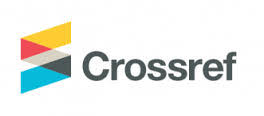Oral Error Correction in the Foreign Language Classroom: Students’ Attitudes
DOI:
https://doi.org/10.59759/educational.v4i2.502Keywords:
Error Correction, Oral Error Correction, Students’ AttitudesAbstract
This study aimed to investigate the attitudes of tenth grade male and female students in public schools in Southern Almazar district towards teachers’ correction of their oral errors. The study also aimed to investigate the students’ attitudes towards the types of errors corrected by their teachers in the EFL classroom. This study is a descriptive analytical study that used a five likert scale questionnaire. The questionnaire consisted of (25) items. It was checked for validity and reliability prior to distributing it to the students. The participants of the study were 342 male and female students from public schools in southern Almazar district. After obtaining the data, the results were analyzed statistically through mean scores, standard deviations, t-test and Levenes’ test. The results of the study showed that participants both male and female have positive attitudes towards oral error correction, results also showed that the participants have a positive attitude towards the different types of errors corrected namely, lexical, pronunciation and grammatical errors respectively. There were no significant statistical difference at (a≤0.05) in students’ attitudes towards oral error correction in the classroom due to gender, and no significant statistical difference in students’ attitudes towards the types of errors corrected by their teachers due to gender. The conclusion is that students want and need their teachers to correct their oral errors whether these errors are lexical, pronunciation or grammatical errors. Making errors is a natural part of the process of learning a foreign language. Teachers should use the best techniques to make students feel at ease for being corrected. Recommendations include conducting research to investigate teachers’ attitudes towards error correction of students’ oral errors.
Keywords: Error Correction; oral error correction, learners’ Attitudes
Downloads
References
Ahangari, S., & Amirzadeh, S. (2011). Exploring the teachers’ use of spoken corrective feedback in teaching Iranian EFL learners at different levels of proficiency. Procedia - Social and Behavioral Sciences, 29(2), 1859–1868.
Alamri, B., & Fawzi, H. (2016). Students’ Preferences and Attitude towards Oral Error Correction Techniques at Yanbu University College, Saudi Arabia. English Language Teaching, 9(11), 59.
AlGhafri, M., Mirza, C., & Gabarre, C. (2023). Oral Corrective feedback: A case study from Oman. Arab World English Journal, 14 (3) 406-417.
Alhaysony, M. (2016). Saudi EFL Preparatory Year Students’ Perception about Corrective Feedback in Oral Communication. English Language Teaching, 9(12), 47-61.
Al Hosni, S. (2014). Speaking Difficulties Encountered by Young EFL Learners. International Journal on Studies in English Language and Literature (IJSELL), 2(6), 22-30.
Alkhammash, R., & Gulnaz, F. (2019). Oral Corrective Feedback Techniques: An Investigation of the EFL Teachers' Beliefs and Practices at Taif University. Arab World English Journal, 10 (2). 40 -54. DOI:
https://dx.doi.org/10.24093/awej/vol10no2.4
Allwright, D., & Kathleen M. B. (1991). Focusing on Language Classroom. Cambridge University Press.
Bang, Y. (1999). Reactions of EFL students to oral error correction. Journal of Pan-Pacific Association of Applied Linguistics, 3, 39-51.
Brown, H. D. (2001). Teaching by Principle: An Interactive Approach to Language Pedagogy. Longman
Candlin, C., & Mercer, N. (2001). English Language in Its Social Context. New York:Routledge
Chaudron, C. (1977). A descriptive model of discourse in the correctional treatment of learners’ errors. Language Learning, 27, 29-46.
Chomsky, N. (1959). Review of Verbal behavior by B.F. Skinner. Language 35, 26-58.
Corder, S. P. (1967). The Significance of Learners’ Errors. International Review of Applied Linguistics 5(4), 161-170.
Corder, S. P. (1981). Error Analysis and Interlanguage. Oxford University Press.
Dulay, H., & Burt, M. (1974). Errors and strategies in child second language acquisition. TESOL Quarterly, 8(1), 129-136.
Dulay, H., & Burt, M. (1974). Errors and Strategies in Child Second Language Acquisition. TESOL Quarterly, 8(2), 129-136.
Ellis, R. (1994). The Study of Second Language Acquisition. Oxford University Press.
Gamlo, N. (2019). EFL Learners’ Preferences of corrective Feedback in Speaking Activities. World Journal of English Language. 9(2), 28-37
Haghani, M. (2012). Corrective feedback and the students’ uptake. ELT Weekly, 4(11). http://www.eltweekly.com/elt-newsletter
Harmer, J. (2001). The practice of English language teaching. London/New York.
Katayama, A. (2007). Japanese EFL Students’ preferences toward correction of classroom oral errors. Asian EFL Journal, 9(4), 289-305.
Karisma, Y., & Arif, B. (2022). Exploring Grammatical Errors in Speaking of Students University: A case Study. International Journal of Education and Linguistics, 4,2, 145-153.
Krashen, S. D. (1982). Principles and Practice in Second Language Acquisition. Pergamon.
Krejcie, R., & Morgan, D. (1970). Determining sample size for research activities, educational and psychological Measurement, 30, 607-610.
Kurnia, R., & Jabu, B., & Munir, (2023). The Pronunciation Errors Made By students of First Grade Senior high School Frater Makassar. International Journal of Business, English, and Communication (IJOBEC). 1, 31-35.
Lighbown, P. M. & Spada, N. (1999). A response to Truscott’s “What’s wrong with oral grammar correction? The Canadian Modern Language Review 55(4), 457-467.
Lyster, R., & Ranta, L. (1997). Corrective feedback and learner uptake: Negotiation of form in communicative classrooms. Studies in Second Language Acquisition, 19(1), 37-66.
Mosbah, G. A. (2007). Treatment of Classroom Oral Errors: A Comparative Study Between Native and Non-native Speaking Teachers. Published Doctoral Dissertation
Park, G. (2010). Preference of Corrective Feedback Approaches Perceived by Native English Teachers and Students. The Journal of Asia TEFL, 7(4), 29-52
Saeb, F. (2017). Students’ and Teachers’ Perceptions and Preferences for Oral Corrective Feedback: Do They Match? International Journal of Applied Linguistics & English Literature, 6(4), 32-44
Schachter, J. (1988). Second language acquisition and its relationship to Universal Grammar. Applied Linguistics. 9(3), 219-235.
Selinker, L. (1972). Interlanguage. International Review of Applied Linguistics 10(3), 209-230.
Shi, G. (2017). Attitudes towards Error correction, Corrective Moves and Their Effects in College English Classrooms in China. International Journal for Innovation Education and Research 5, 32-39.
Tabatabaei, O. & Banitalebi, A. (2011). Feedback Strategies in Foreign Language Reading Classes. Asian Culture and History, 3(2), 59-70.
Truscott, J. M. (1999). What’s wrong with oral grammar correction? The Canadian Modern Language Review, 55, 437-456 .
http://dx.doi.org/10.3138/cmlr.55.4.437
Zahid Hurain, (2023). Grammatical Errors made by students in Speaking English. European Journal of Linguistics, 2, 53-72.


